PHILADELPHIA, 23 September –- Gamification with Kevin Werbach of the University of Pennsylvania’s Wharton Business School, Week 4!
• Gamification Home Page @Coursera
Gamification done well is a form of design. This unit provides a six-step framework to apply to any gamification project.
CLASS NOTES – PART 7 – GAMIFICATION DESIGN FRAMEWORK
7.1 Design Thinking
Design isn’t just creative expression, but a process for attacking problems.
• Purposive – has a goal, everything in process works toward
• Human Centered – the experience, designed around people – “Players!”
• Balance of analytics & creative
— formal algorithms don’t always solve problems, heuristics, Abductive Reasoning (Charles Pearce)
• Iterative – prototyping & playtesting – rough prototype > let people play with it > continual improvement
Gamification Design Framework
1. Define business objectives
2. Delineate target behaviors
3. Describe your players
4. Devise activity loops
5. Don’t forget the fun! – easy 2 miss when you obsess on the structure
6. Deploy the appropriate tools
7.2 D1/2: Define Business Objectives / Deliniate Target Behaviors
Not PBL, but your ultimate goals. What defines Success / Failure?
eg Foursquare’s objectives:
• Social Sharing – habit of checking in, build database
• Influence Marketing – Mayor Special > influencer others look to
How do you catalog your business goals?
1. List & Rank possible objectives & tradeoffs
2. Eliminate Means-2-Ends eg “Badges” aren’t a goal but a means
3. Justify remaining objectives
Step 2 – Target Behaviors
• Specific things you want Customers, Staff, Students, etc, to do
• Success Metrics (“win states”)
• Analytics
— DAU / MAU – Daily / Monthly average users (ratio of the 2 numbers) – 1.0 would be incredible consistency 0.01 would be sad (“bounces”) Sporadic attendance or abandonment
— Virality – friend referrals – Pinterest, Zynga, etc!
— Volume of Activity – how much activity, points, badges, etc, happening – and what are peeps doing? earning points? badges?
7.3 D3: Players
Who are these people playing your game?
• Demographics
• Psychographics – things they like to do, buy, etc
help you “segment” – not try to be all things to all peeps
What motivates your players?
(Richard) Bartle MMOG Player Type Model
Achievers
Explorers
Socializers
Killers may be only 1% of participants, but they’re the most intense participants
(you’re not just 1 type always)
7.4 D4: Activity loops
Games have “loops” like programs
• Engagement Loops – micro – activities:
Motivation > Action > Feedback >
• Progression Loops – macro – long term
series of small challenges – part of a larger challenge
also a representation of the player journey – rising & falling action
Onboarding > Climb / Rest / Climb Rest… > Boss Fight (now a really hard challenge 4 next level)
a natural experience, not a grueling forced march
and not monotonous, variety of experiences in game
7.5 D5/6: Don’t Forget the Fun & Deploy Appropriate Tools
it’s easy to forget it’s supposed to be fun!
If the underlying activity isn’t fun & engaging, you have a real challenge. Don’t assume the activity is fun in itself.
Then again, even LinkedIn’s progress bar can be a bit of fun. Was apparently enough to get peeps to fill out profiles more. Gave them substantial results.
Protein Folding “game” – real advances in a very serious cause (medicine, aids vaccine, etc)
6. Deploy Tools
a lot of possibilities beyond PBL
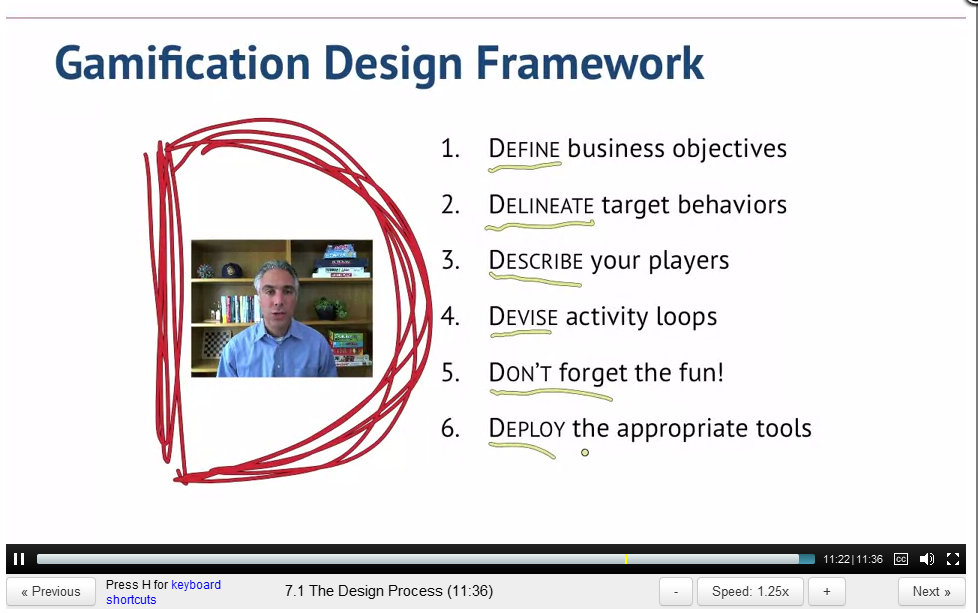

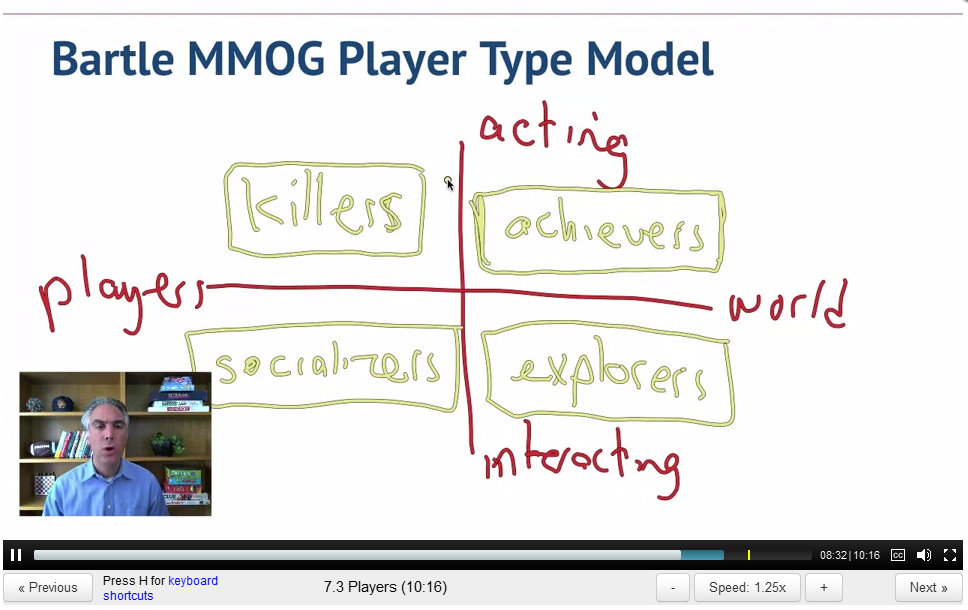
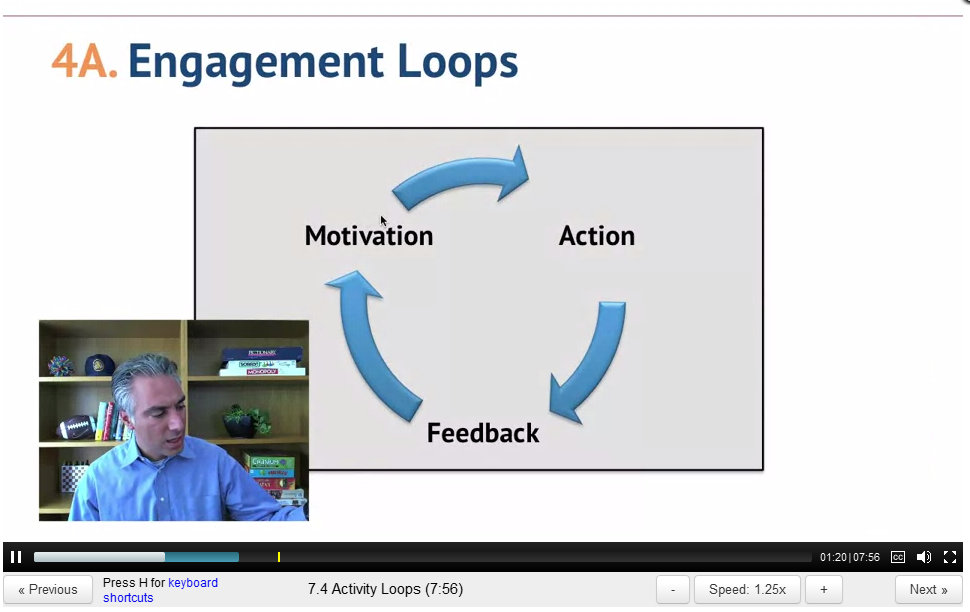
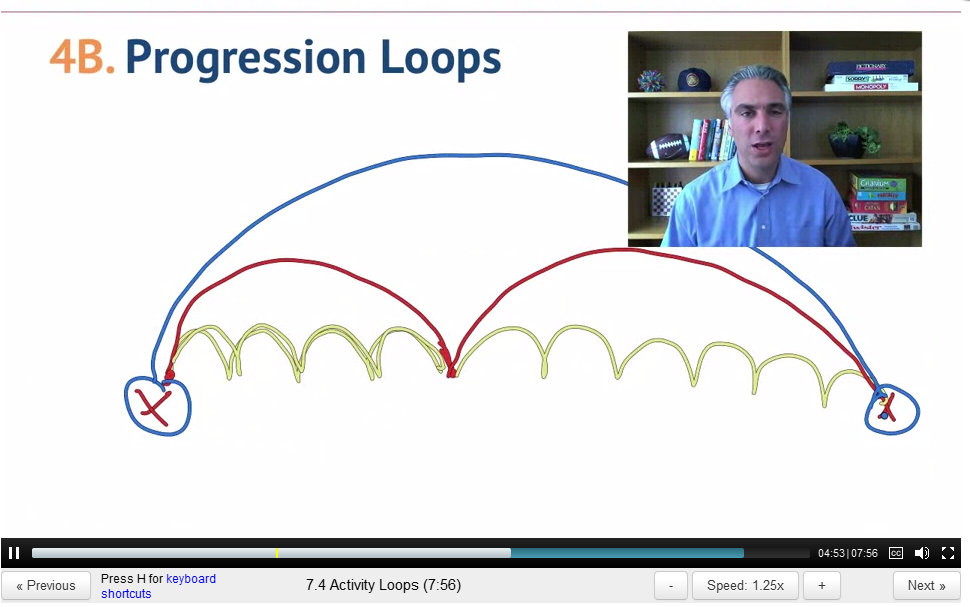
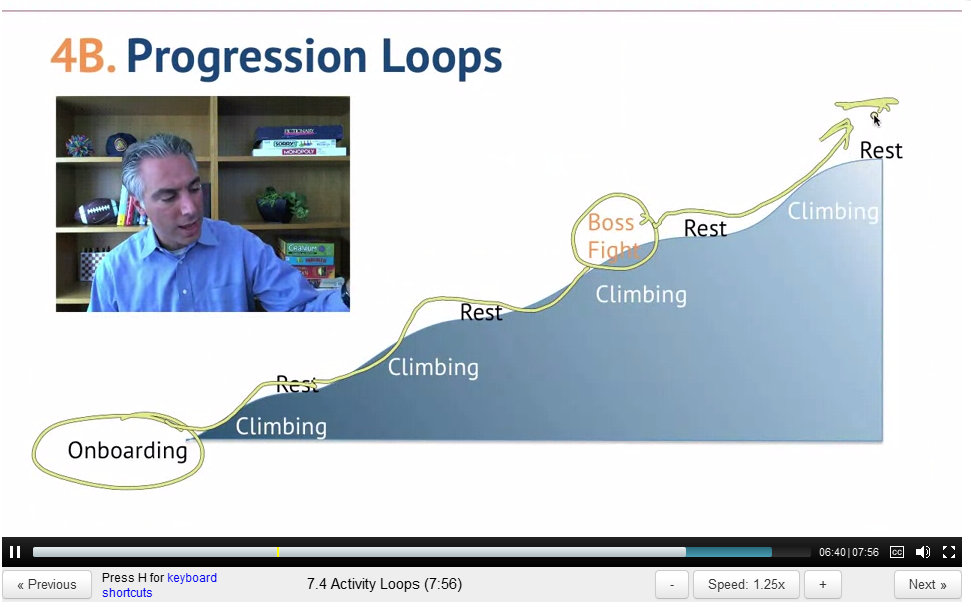
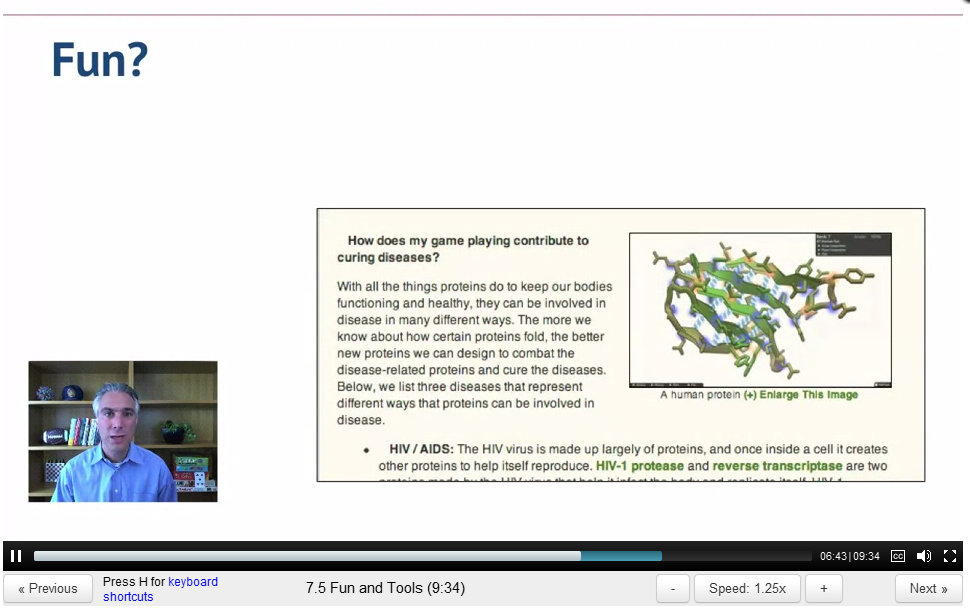
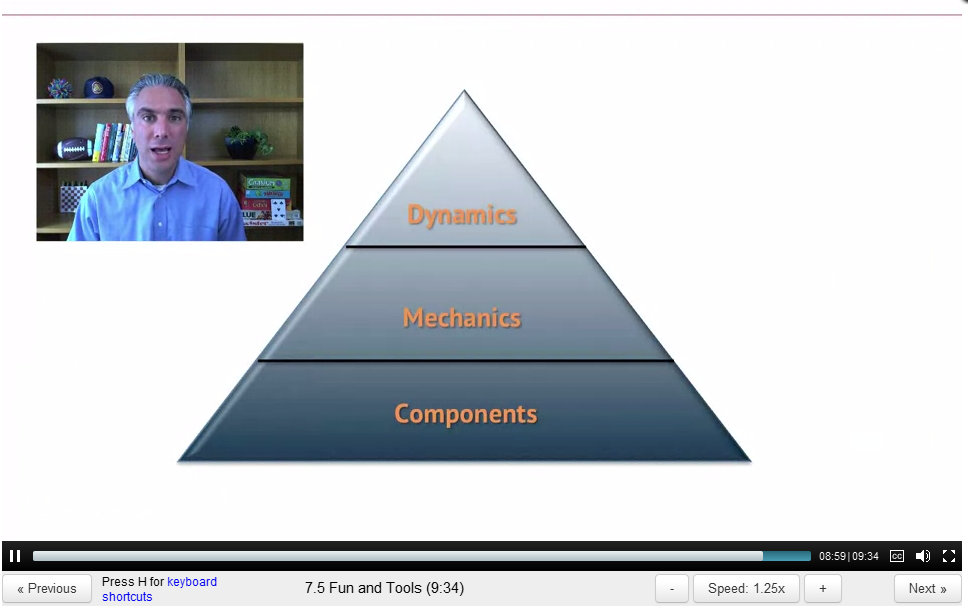
4 thoughts on “Gamification 7 – Design Framework”